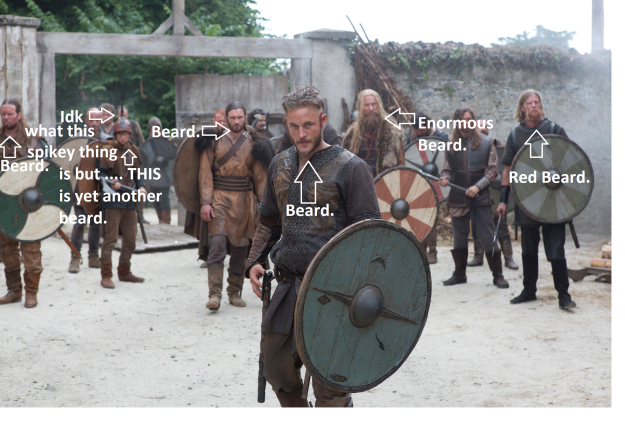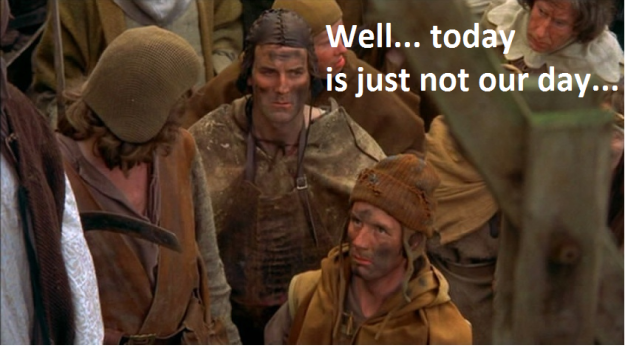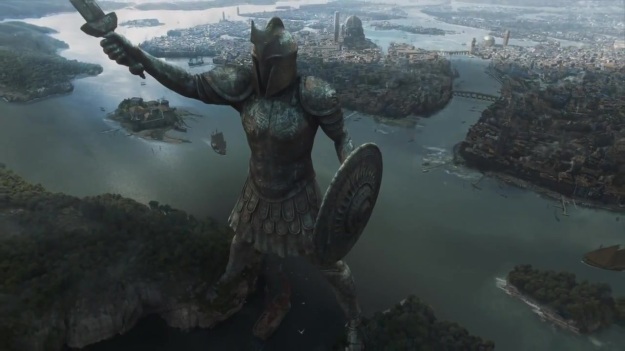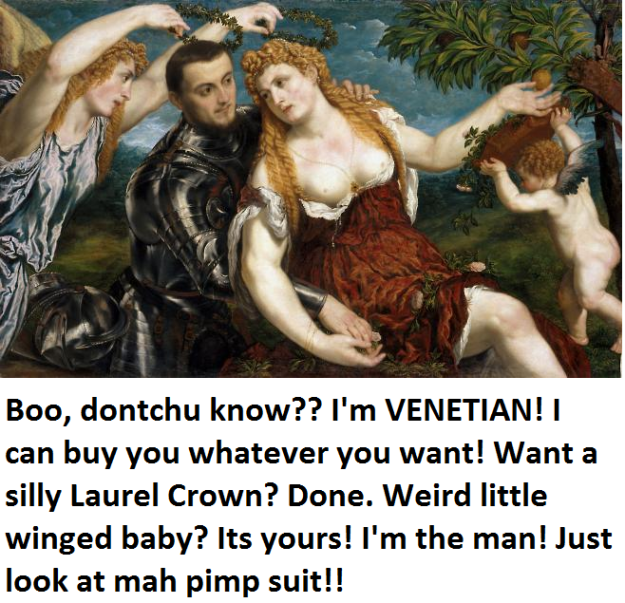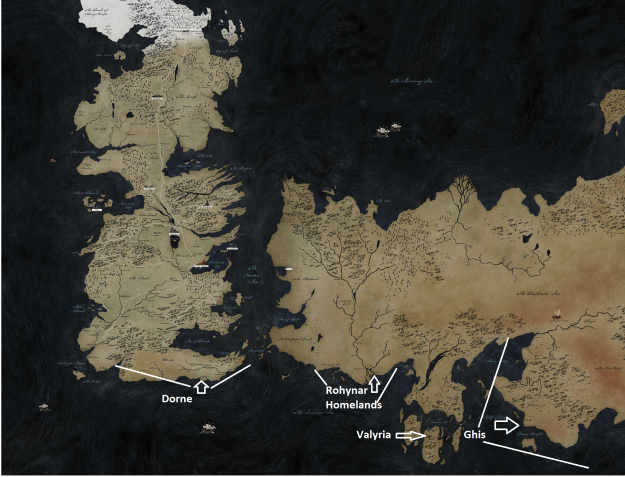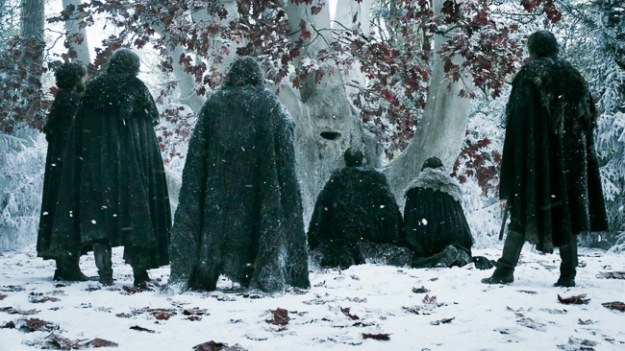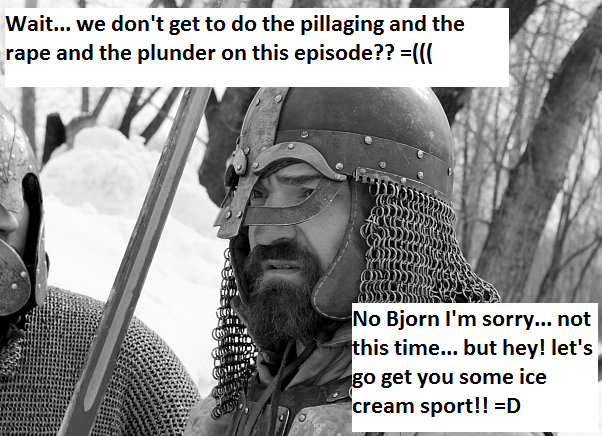History Behind the Throne is a series discussing the historical influences embedded within the Game of Thrones series. For an introduction to the series click HERE. This is meant to be a discussion within the world of the HBO series, meaning anything that has happened on the show so far is fair game to discuss, but if you choose to comment NO BOOK MATERIAL AND SPOILERS ARE ALLOWED. Thanks! Aaaaaalso if you like it and want some more click HERE! Thanks again!
Alrighty, so I know I’ve written several of these articles about migrations, and you’re probably getting sick of them BUT I’ve got one more for you. Now, in the massive migration article we pretty much hit England’s history up to and through the Middle Ages, but for the sake of brevity I only touched on one specific migration very lightly. That would be the Danes aka vikings aka meanest baddest, beardliest dragon boat riders on Earth.
Ok… no more distractions. Anyway, when we last left our English heroes they had more or less formed an England-ish country in terms of borders and were comprised ethnically of Anglo-Saxons with a rich and patterned history of Romans, Celts, Saxons, Angles, and all sorts of happy funtimes genes. DIVERSIFY THE GENE-POOL! YAY!
ANYWAY! Everything was lookin’ all hunky-dory for these guys during the period formerly known as the heptarchy. (Aside: its called the heptarchy because there were allegedly 7 major kingdom’s during the period [hept being the Greek root for 7 and archy from the Greek for “to rule”] HOWEVER a lot of historians have kindof abandoned this nomenclature in more recent times, claiming it is a misnomer for a variety of reasons… mainly that there weren’t really 7 Kingdoms because the number often fluctuated as various kingdoms collapse, were conquered, reformed etc. (by the way… any of this sounding familiar Game of Thrones fans?? 7 Kingdoms?!?! OMFGROFLJAMZ THE PARALLELS ARE ENDLESS… anyway… Some historians get snooty about the phrase but ultimately the phrase does a good job of evoking the time period to which it refers so I’m gonna use it because fuck the police…

“Wooo! Seven Kingdoms! Yay! I bet nobody will mess this up ever!! Hurray and Huzzah!!” Image via Wikipedia
Ok, so you have these 7 Kingdoms of Northumbria, Mercia, East Anglia, Essex, Kent, Sussex, and Wessex, and they existed, at one time or another, broadly over the approximate period from 500AD to 850AD. However, these Anglo-Saxon kingdoms had their little jam fest rudely interrupted beginning in the 9th century. You see, the 9th century AD as the beginning of the Viking Age, a period of Scandinavian expansion which would ultimately terrorized huge swaths of Europe, even ranging as far as Constantinople on the very edge of Europe.
Everybody knows of the Vikings badassery so I’ll try not to waste too much time here, but these guys were amazing. They were known to be superb seamen (laugh if you must) of Leif Eriksson is often given credit for discovering the New World when he led an expedition of Scandinavians to Greenland. Part of what made them such badass sailors, however, was the ship they used.

Image via Nordic Museum http://nordicmuseum.blogspot.com/2014/03/viking-long-ships.html
The Viking Longboat was the terror of Europe for hundreds of years. Because of the ship’s shallow draft (meaning it didn’t sink very deep into the water… unlike a large galley or modern battleship which sinks deeper into the water and ‘cuts’ through it like a knife, the longboat was flatter, more like a piece of paper floating on top of the water rather than a knife cutting through it. The cool thing about this meant that it could sail in deep water (the open sea) and shallow (major rivers of Europe) alike. This set the Vikings apart from other raiders in that not even inland cities were safe from them. Moreover, they weren’t dependent on wind to sail as their ships all came equipped with oars for manual power. In short, then, these guys were unstoppable beasts and you just had to pray they weren’t interested in taking your shit when compared to your neighbors.
Moreover, using their ships they were able to carve swaths of land out of many European nations for themselves, including France (one of the superpowers of the day), and even conquering the entire Island of Sicily for themselves. Their own homelands, because of the climate and limited arable land, were incapable of supporting a large population. When the Scandinavian population exceeded certain natural limitations, then, they would carve out new territories out of their cowering neighbors’ land. (Or, even if they didn’t need land they would just go take those same cowering neighbors’ shit… because they needed it more… at least that’s what they told me… )

Asha Greyjoy… slightly more badass than her brother… and perhaps more “manly” at this point as well… eh? eh? See what I did there?
Similarly, George R. R. Martin’s Ironborn are revered sailors, feared raiders, and come from a homeland (the Iron Islands) which does not fully support their needs (thus necessitating the raiding). The Ironborn are credited with raiding the Lannister lands and lighting the Lannister fleet on fire in Lannisport. We are told Theon has an uncle who is off raiding in distant lands in Essos and the island far away from Westeros. They are known to raid the Stark lands frequently throughout history. And they do all of this on board ships which are undoubtedly Viking Longboats.
Perhaps more importantly, however, is just how far these two peoples, the Ironborn and the Vikings, could go when driven to their fullest extent. As mentioned, vikings began raiding England in the 9th century AD and continued into the 11th century. (Also, as a nerdly aside, History Channel’s show Vikings covers the beginnings of this story by bringing to life the Ragnar Lodbrok Saga and its an excellent show. If you’re suffering from withdrawal after Game of Thrones season 4 ends next month, I highly encourage you to go check out the first 2 seasons of Vikings.)
BUT ANYWAY the Vikings began raiding England in the 9th century. The hardest hit was the Kingdom of Northumbria which was just unlucky enough to be the first place the Vikings landed. At first they only raided monasteries and coastal towns but they gradually moved inland. Moreover, eventually they got sick of just raiding, because… y’know… its hard to haul all that gold and shit back on a boooooat and sometimes you don’t have enough rooooom so they decided “forget this… lets just conquer this place, and then we can hoard all our gold right here!” … so they did … and the Englishmen lamented.
The Danes (meaning Vikings from Denmark at this time) conquered pretty much the entire center and northeastern corner of modern day England. Once they did so they established a new Kingdom of sorts known as the Danelaw (author’s note: convenient thing about Scandinavians is they tend to name things after what they are… so the Danelaw was just the region of England where the Danes’ Law governed the area.)
The Ironborn had their own sort of experience with this time of conquest about 60 years before the Targaryen Conquest. The Ironborn under their Iron King during this period expanded into the Riverlands (what we know of as the Tully lands) and built a massive Kingdom for themselves with a new capital at Harrenhall (that haunted castle we hear so much about). Under King Harren the Black the Kingdom was at its height, and he used his massive wealth to erect the gigantic castle which was allegedly impregnable. However, once Aegon the Conqueror crossed over with his dragons the castle didn’t look so impregnable. The castle withstood the Dragon’s onslaught in large part, however, their fired destroyed and dilapidated many portions of it. Moreover, Harren himself was burned to death within his own walls. With Harren’s death ended the great Kingdom of the Ironborn and they were forced back to their island and their raiding ways.

According to the Game of Thrones into, Harrenhall was not so fireproof as Harren the Black would have hoped
In both cases then we can see a warrior, seaborne, raiding culture with limited resources expanding to other regions, first simply for economic profit via raiding, but ultimately with the intent to conquer new territories entirely for their people. Moreover, both these groups, the Vikings and the Ironborn, were greatly successful at this. The Ironborn conquered an enormous kingdom for themselves on the mainland of Westeros and the Vikings conquered large portions of England, France, Italy, Sicily, and other regions.
Furthermore, both these groups possessed a degree of cultural similarity. Of course the limited output of their homelands and the resulting emphasis on raiding have been elucidated already. However, raiding wasn’t the only output of resource scarcity in the homeland for these people. The Ironborn come from the Iron islands and are known for paying the Iron price (often involving bloodshed) rather than the gold price (just paying for it) for items. This emphasis on Iron is especially apt when looking at their Viking forebears in that Iron was both incredibly important and incredibly scarce in Scandinavia. There was no major mining of iron ore veins for them, but rather they had to make to with peat iron. Essentially, there was a lot of iron in the poor soil of Scandinavia, and the Vikings discovered that if you took a crapload of this bog dirt and burned off all the impurities you would end up with what they call bog iron (because the soil came from bogs) or peat iron (because the specific type of soil was called peat).
However, in order to produce this kind of iron you needed a loooooot of dirt to produce a little Iron. Because of this Vikings favored weapons such as axes and spears over broadswords and used wooden round shields rather than steel kite shields simply because in all these cases the latter items required more metal. They could produce 3 axes with the amount of metal it would take to produce one broadsword, and working with their limited resources they needed to arm as many men as possible. Iron, then, was both incredibly scarce and therefore incredibly important to the Vikings so it is only fitting that it became a central theme, even down to the name, of Martin’s Westerosi equivalents.

Vikings favored axes such as these to conserve on metal use. They could produce three axes with the same amount of metal it took to produce one broadsword. Moreover, an axe penetrates armor better than a broadsword, meaning they could even have an advantage over a knight in full plate mail.
So in both Georgie’s world and the real world we can see that resource scarcity, ingenuity, and genetic badassery result in the production of a seaborne raiding elite which terrorized their more docile neighbors. Raiding becomes a way of life for resource starved peoples who eventually tire of the effort and carve more hospitable homelands out of their neighbors’ territory. However, I think I’d have to opt for Odin, Valhalla, and an eternity of booze, women, and battle over the Drowned God’s eternity of… idk… sitting at the bottom of the ocean? Or whatever the Ironborn do when they die… so point to the Vikings! Enjoy your rocks Ironborn. I’m sure they’re very nice in the summertime.

